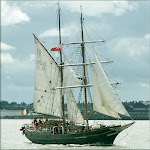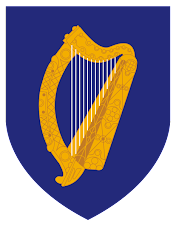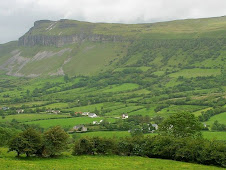 It was the name of an oil production platform (pictured left in operating condition) in the North Sea, acting as the technical hub for the Piper, Claymore and Tartan offshore oil and gas fields, about 120 miles northeast of the Scottish city of Aberdeen.
It was the name of an oil production platform (pictured left in operating condition) in the North Sea, acting as the technical hub for the Piper, Claymore and Tartan offshore oil and gas fields, about 120 miles northeast of the Scottish city of Aberdeen.Owned and operated by Occidental Petroleum (Caledonia) Ltd., it had been constructed and originally used for oil production. Later it was converted to handle gas, which - as an investigation would establish in 1990 - broke its safety concept, with the result that sensitive areas that should stay well apart were brought together.
On July 6th, 1988, just before 10 p.m., a major gas leak - caused by faulty maintenance work and a lack of communication between key personnel - occurred, followed by fires and a series of explosions on the platform.
 The heat ruptured connecting gas pipelines from other platforms and production rigs, causing further massive explosions and a fireball that engulfed Piper Alpha and could be seen 100 km away. It all took just 22 minutes and left 165 of the workers on board and two crewmen from a rescue vessel dead.
The heat ruptured connecting gas pipelines from other platforms and production rigs, causing further massive explosions and a fireball that engulfed Piper Alpha and could be seen 100 km away. It all took just 22 minutes and left 165 of the workers on board and two crewmen from a rescue vessel dead. Amazingly 61 men survived. Most of them had to jump into the sea through darkness, a desperate leap that killed some of their colleagues.
Several rescue crews flying to the Piper Alpha platform were confronted with the sight of massive flames, heavy damage and complete chaos. When constructing the platform, there was only one control room built and no provision was made for an emergency control station. As the control room had to be abandoned only minutes after the first explosion, there was absolutely no way to control and coordinate further action from the platform itself.
Rescue teams from nearby vessels, another platform, Royal Navy and RAF did what they could under the extreme and unprecedented circumstances. Their heroic work is well remembered, twenty years after the event as much as at the time itself.
 Our own vessel was too far away to offer assistance, but we followed the radio traffic the tragedy created in stunned and respectful silence. No-one who, in one way or another, witnessed the event will ever forget it.
Our own vessel was too far away to offer assistance, but we followed the radio traffic the tragedy created in stunned and respectful silence. No-one who, in one way or another, witnessed the event will ever forget it. Later the legendary Texan firefighter Red Adair was flown in to quell the blazing wells on what remained of Piper Alpha (photo above), and Britain's Prime Minister Margaret Thatcher was among those who visited the survivors and members of the rescue services.
Twenty years on, Piper Alpha remains the worst disaster in the history of offshore oil and gas production. A wreck buoy, marking the remains of Piper Alpha, sits as a permanent reminder approximately 120 metres from the south-east corner of the replacement Piper Bravo platform.
 Another lasting effect of the disaster was the establishment of Britain's first "post-Thatcher" trade union, the Offshore Industry Liaison Committee (OILC).
Another lasting effect of the disaster was the establishment of Britain's first "post-Thatcher" trade union, the Offshore Industry Liaison Committee (OILC). Meanwhile a memorial sculpture (right), created by the artist Sue Jane Taylor and showing three oil workers, was erected in the Rose Garden of Hazlehead Park in Aberdeen.
Only Occidental Petroleum, the company that owned and operated Piper Alpha, seems to have forgotten all about it. There was no corporate commemoration of the date, and their website contains no reference to the Piper Alpha disaster.
The Emerald Islander







































No comments:
Post a Comment